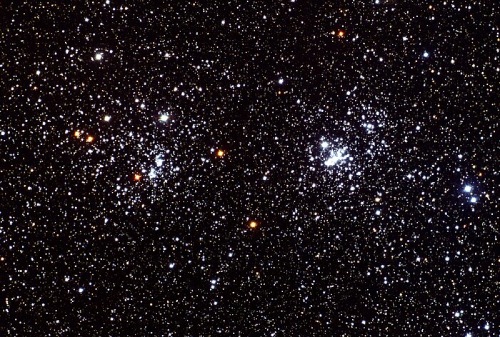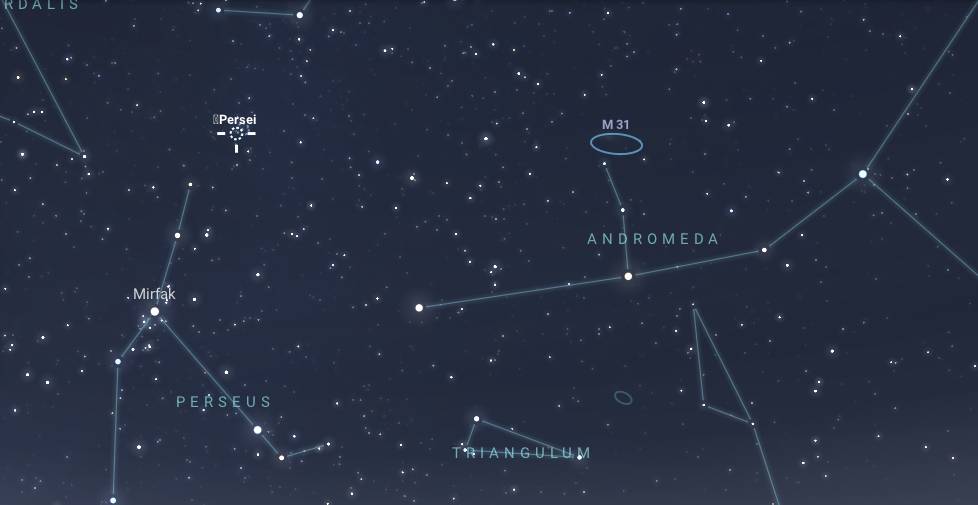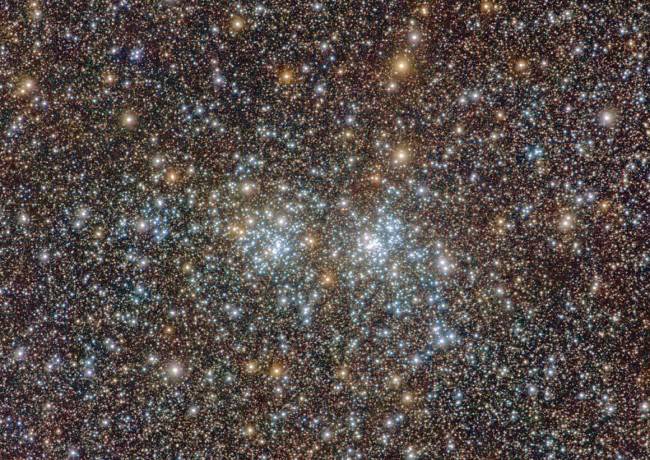The Double Cluster, also catalogued as NGC 869 and NGC 884 (Caldwell 14), is an exquisite pairing of open star clusters in the constellation Perseus, named after the celebrated Greek hero. Located close to one another, these two clusters are widely regarded for their stunning display, captivating both amateur astronomers and stargazers alike. Their beauty is evident even to the unaided eye, particularly under dark skies, and they offer an even more spectacular view through binoculars or telescopes.
Composition
The Double Cluster is composed of NGC 869 and NGC 884, two open clusters filled with hundreds of hot, young, and luminous stars. These clusters are close to each other in the sky and are also located at a similar distance from Earth, approximately 7,500 light-years away. Together, they span an impressive width of about 37 light-years, making the Double Cluster a prominent feature in the Milky Way. This close alignment creates a striking visual effect, as the two clusters appear almost as a single, glittering patch in the sky.
The stars within the Double Cluster are relatively young in astronomical terms, with estimated ages between 12 to 20 million years. Most of these stars are bright blue-white giants, their colour indicating both high temperature and youth. Some of the brightest stars within the clusters shine at magnitudes close to 7, which contributes to the overall glow that makes the Double Cluster so visually impressive.

Size and Density
Both clusters are densely packed, with each containing a substantial number of stars, estimated at over 300 stars in each cluster. NGC 869, the western member, is slightly brighter and denser than its companion, NGC 884. The combined angular size of the clusters as seen from Earth is approximately 60 arcminutes, comparable to the apparent size of two full Moons, though the true size spans 37 light-years. This dense concentration of luminous stars within a relatively small area of space makes the Double Cluster a rare and beautiful sight, even among open clusters.
History
The Double Cluster has a rich historical legacy, with references dating back to ancient civilizations. Known since antiquity, it was catalogued by the Greek astronomer Hipparchus in the 2nd century BCE and later described by the 18th-century astronomer William Herschel. Herschel famously referred to it as “two superb clusters…rich and condensed,” underscoring its visual impact. Over the centuries, it has continued to draw admiration and attention, becoming a staple object for observers and an iconic feature of the autumn and winter skies.
Observation
Visible to the naked eye under dark sky conditions, the Double Cluster appears as two close hazy patches near the “W” shape of the constellation Cassiopeia and just below the bright star Mirfak (Alpha Persei) in Perseus. With a combined apparent magnitude of approximately 3.3, NGC 869 and NGC 884 stand out distinctly against the background of the Milky Way. Observers may note that NGC 869 is slightly brighter than NGC 884, although both are magnificent through optical instruments.
The Double Cluster is best observed during autumn and winter, from September to March, when Perseus is prominently positioned in the Northern Hemisphere. Through binoculars, the cluster reveals a sparkling display of stars, while telescopes unveil even finer details, such as the varied colours of individual stars and the intricate patterns they form. The Double Cluster’s grandeur is amplified in astrophotographs, where its dense star fields against the backdrop of the Milky Way create one of the most breathtaking vistas in the night sky.





